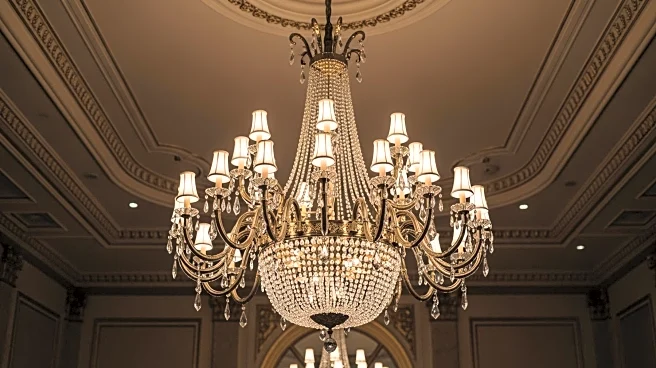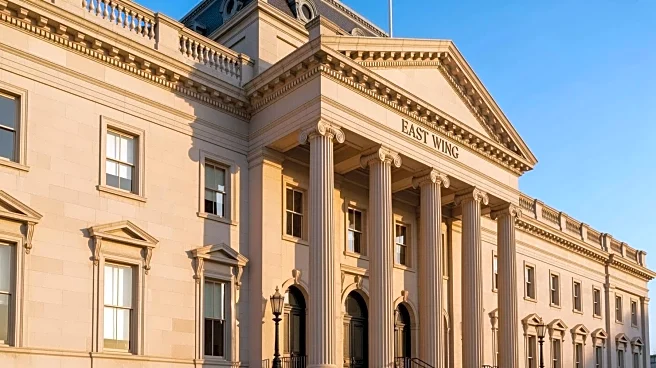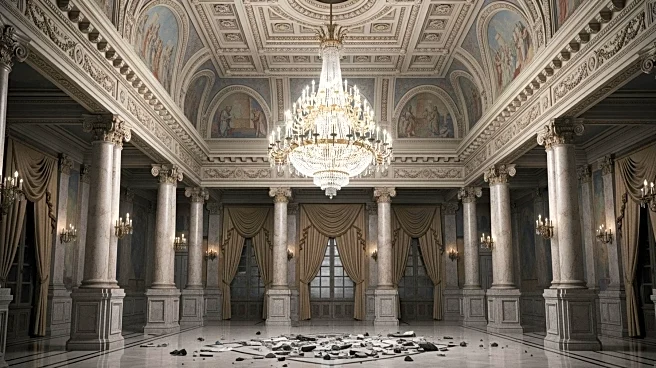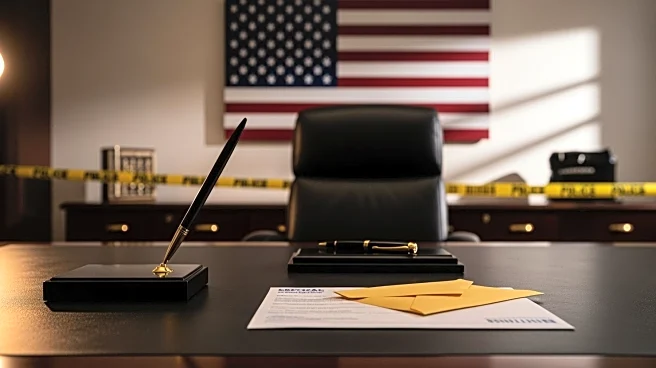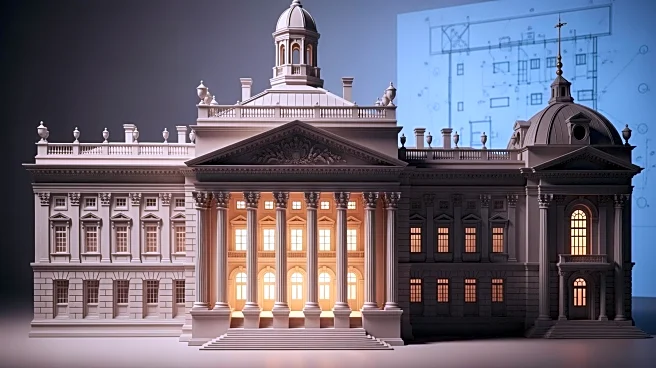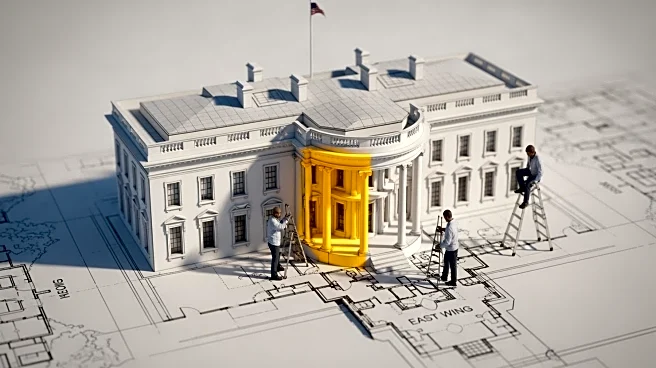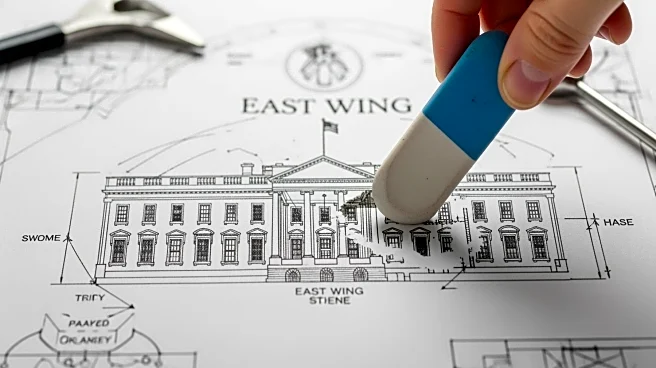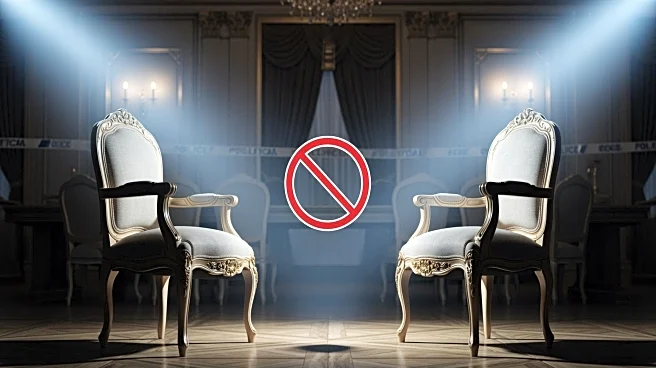What's Happening?
The demolition of the East Wing of the White House to make way for a new 90,000 square-foot ballroom has drawn criticism from preservationists and the public. The project, initiated under President Trump's
administration, was initially presented as an addition that would not interfere with the existing structure. However, recent images of the demolition have contradicted these assurances, leading to public outcry. The project, which is privately funded and costs over $200 million, marks the first major change to the White House since 1942. The White House has stated that the National Capital Planning Commission (NCPC) will review the plans once demolition is complete, although the NCPC does not have jurisdiction over demolition work. Critics, including the National Trust for Historic Preservation, have called for a pause in the demolition to allow for public and official review.
Why It's Important?
The controversy surrounding the White House ballroom project highlights tensions between development and historic preservation. The White House, a symbol of American heritage, is exempt from certain preservation laws, but traditionally, administrations have sought input from preservation bodies. The current situation raises questions about the balance between modernization and maintaining historical integrity. The project could set a precedent for future alterations to national landmarks, potentially impacting how historic sites are preserved across the U.S. The backlash also reflects public sentiment on transparency and accountability in government-led projects, especially those involving iconic structures.
What's Next?
The White House plans to submit construction plans to the NCPC soon, which may provide an opportunity for further scrutiny and public input. The completion of the ballroom is expected before the end of President Trump's term. Stakeholders, including preservationists and the public, may continue to advocate for more stringent review processes for such projects. The outcome could influence future policies on how changes to historic government buildings are managed, potentially leading to legislative or procedural adjustments to ensure greater oversight.
Beyond the Headlines
The situation underscores the ethical considerations in balancing progress with preservation. The decision to proceed with the demolition without broader consultation may affect public trust in government decisions regarding national heritage sites. It also raises cultural questions about the value placed on historical structures and the narratives they represent. Long-term, this could influence how future administrations approach renovations and the role of public opinion in shaping national landmarks.
